How St George's Hospital is reducing ambulance queues
- Published
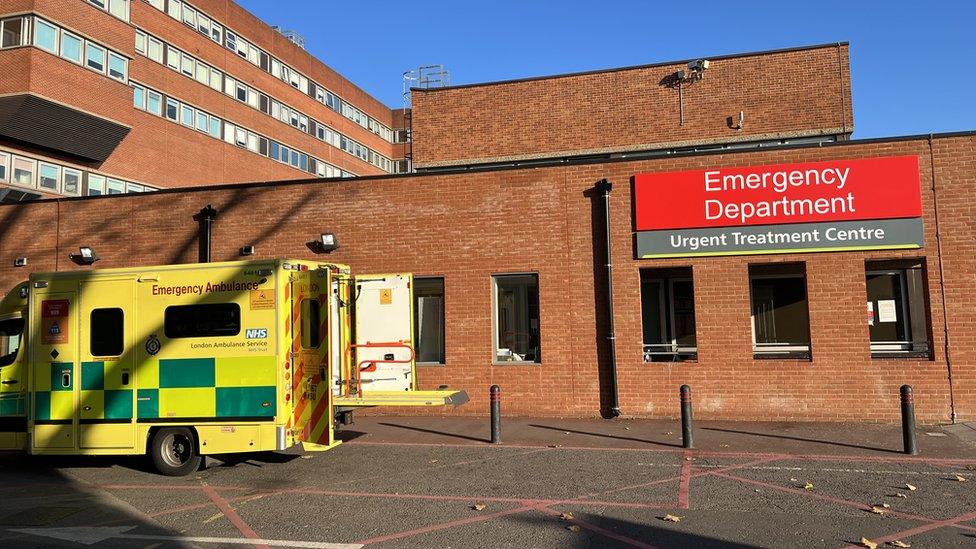
There are not many ambulances queuing at St George's
Like many hospitals, St George's is preparing for increased demand this winter - and trying to come up with solutions.
At St George's Hospital in Tooting, south London, they have 129 patients fit and ready to go home but they cannot be discharged because of a lack of available care either at home or residential facilities.
One senior doctor has described the situation for the winter ahead as "a bleak picture".
Staff are seeing signs of strain at both ends of the patient process, on arrival and departure.
As well as high numbers of patients - the hospital is seeing about 500 emergency department patients a day, about 100 more than before the pandemic - those arriving are more sick than before.
NHS England data released on Thursday showed more than 40% of people needing a hospital bed in November spent more than four hours waiting on trolleys, with nurses and ambulance workers set to strike in the coming month.
Ambulance response times in the capital are 30 seconds slower on average than elsewhere in England.
St George's has started "cohorting" at some busy times to prevent large queues of ambulances, something being utilised across many NHS hospitals.
This means that if you have four ambulances each with a passenger on board, one paramedic team will come into A&E and sit with the four patients, freeing up crews on the other three ambulances.
Dr Jane Evans, a consultant in acute medicine at St George's, said the inability to meet targets and give the best care damaged staff morale.
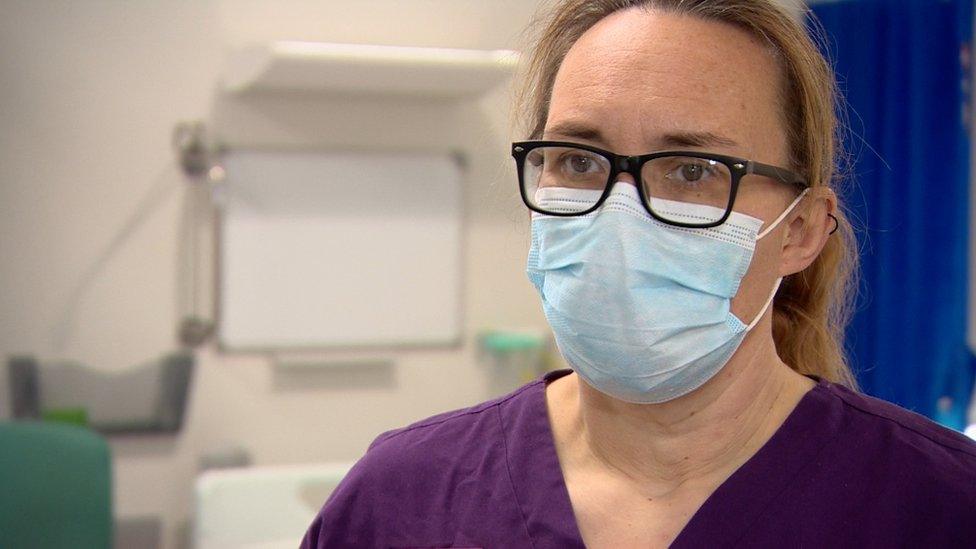
Dr Jane Evans says staff are having to do the best they can
She said: "The staff find it really difficult, particularly in our emergency department.
"The team are there to manage the most sick people as they first come through the front door in those first few hours of care and, feeling that they can't always do that because they are unable to find space to see people, is really challenging.
"It's not what everyone trained for, it's not what we come to work for, but we have to do the best we can."
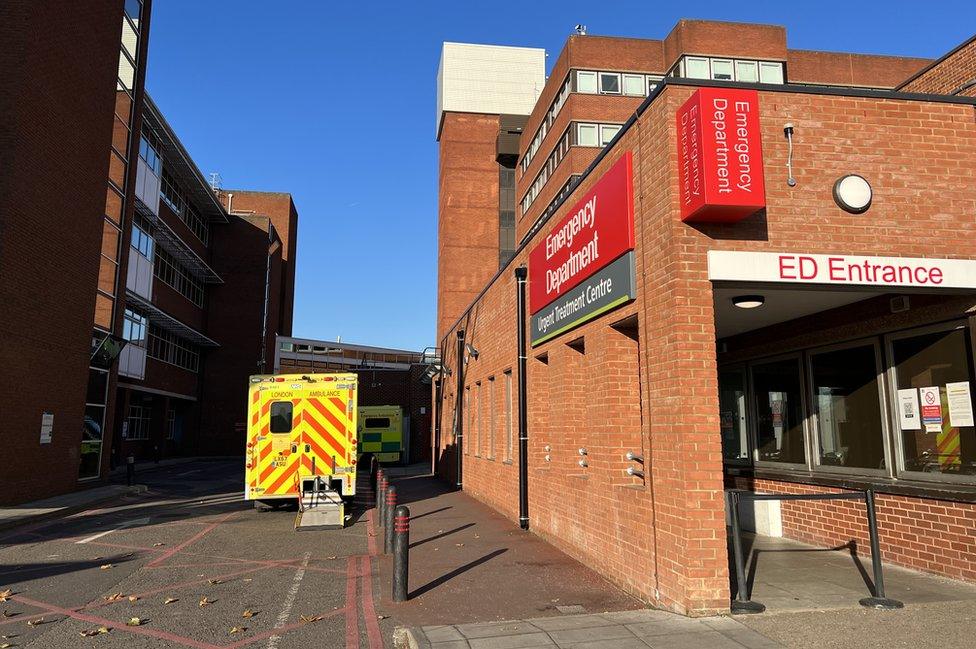
It is quite likely St George's Hospital will have a "triple viral season", says Dr Jane Evans
The cold snap will only add further pressure, Dr Evans warns.
She added: "It's quite likely we are going to have a triple viral season with both types of flu and covid still coming and that's going to be a real challenge for us.
"On top of all of the challenges we have around capacity and beds, we have to try and isolate those patients to prevent onward infection to others, and that really does put pressure on the system. I'm really worried about winter."
Luci Etheridge, chief medical officer for St George's, said: "Most patients that arrive are sicker than previously, possibly due to not seeking help during the pandemic's peaks over the past two years.
"We're seeing a lot more frail, elderly people needing hospital care."
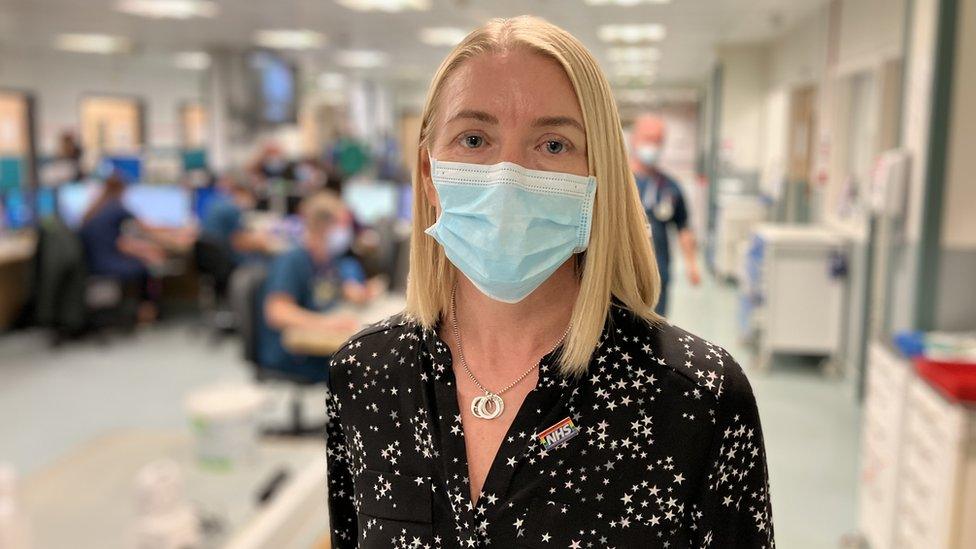
Dr Luci Etheridge says the hospital is struggling to discharge patients but the A&E is always there to be used if needed
"We are struggling with being able to discharge patients from hospital so that's really impacting on a flow through the hospital.
"One of our main messages to people is we're always here if you need us. If you really need the emergency department, it is here and it will treat you."
A London Ambulance Service spokesperson said: "We are working in close partnership with hospitals and A&E departments across the capital to develop innovations that reduce delays to patient handovers.
"This includes processes to ensure patients are kept safe, whilst enabling as many crews as possible to get back on the road in a timely way to respond to patients who are waiting for a 999 emergency ambulance."

Follow BBC London on Facebook, external, Twitter , externaland Instagram, external. Send your story ideas to hellobbclondon@bbc.co.uk
- Published6 December 2022
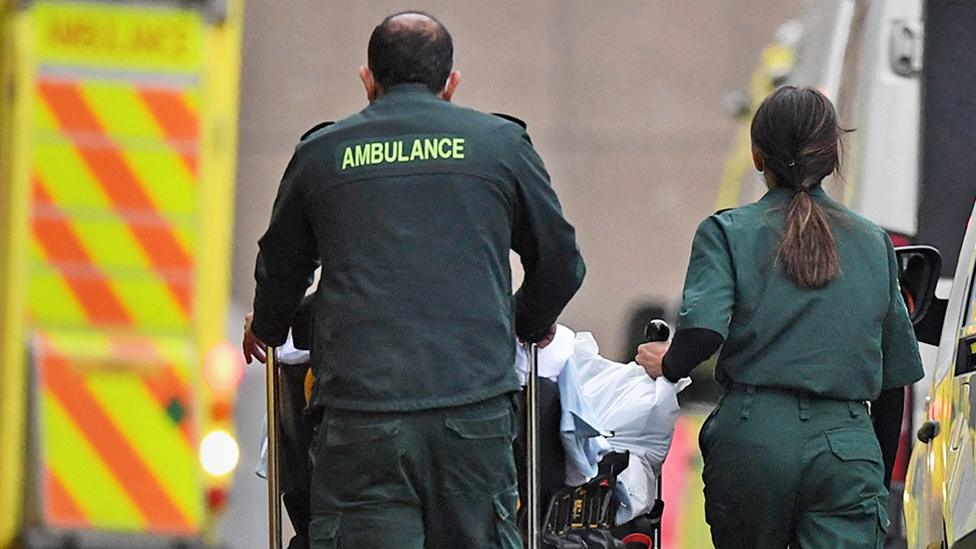
- Published25 November 2022

- Published16 November 2022

- Published13 October 2022
